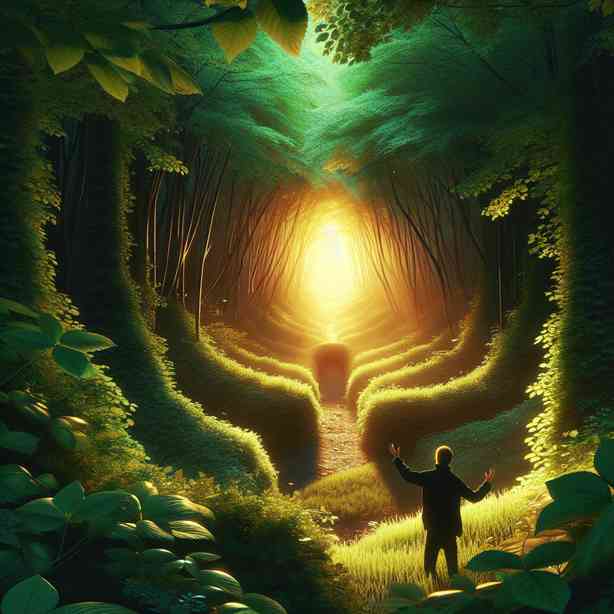
Discovering a hidden track can be one of the most exhilarating experiences for music enthusiasts. It often feels like an unexpected treasure, revealing itself amidst the well-known tracks that surround it. This phenomenon, where listeners come across a song that isn’t prominently featured in the album or promotional material, can spark a sense of joy and excitement, providing a unique connection to the artist’s work. In this exploration, we will delve into the essence of hidden tracks, their background, significance, and the thrill of unearthing them.
Hidden tracks have a rich history in the music industry. They often emerged during the time of vinyl records and cassette tapes. Musicians used hidden tracks as a way to end an album with a surprise, leaving listeners in awe. Many listeners would mistakenly think that an album had concluded, only to discover that there was more music waiting for them. This quaint tradition allows artists to experiment with their creativity and present a more personal or unconventional piece to their fans.
One of the most famous examples is Nirvana’s “Endless, Nameless,” hidden at the end of their seminal album, “Nevermind.” After the final track, listeners would have to wait several minutes before this raw, unfiltered jam kicked in. Such hidden gems often showcased the band’s true essence, unpolished and authentic, resonating deeply with the audience. The thrill of discovering this type of content creates a shared bond between the artist and their fans, as listeners feel as though they’ve stumbled upon something exclusive.
In recent years, with the rise of digital music and streaming services, the concept of hidden tracks has evolved. Many artists use alternative methods to engage their audience, such as including a bonus track accessible only through a specific platform or social media interaction. These strategies not only enhance the overall experience but create a sense of community among listeners. For instance, Taylor Swift often includes surprise songs during her concerts, making every show unique and giving her fans something to cherish.
Moreover, the excitement of discovering a hidden track can turn listening to an album into an adventure. How many times have you pressed play on an album, only to get lost in its layers? There is something magical about the anticipation that builds as the listener approaches the end. It is during this time, often coupled with the finality of the last track, that one holds their breath in hopes of finding an unexpected surprise. This emotional rollercoaster can make the experience more rewarding and memorable.
The significance of hidden tracks goes beyond mere entertainment; they symbolize an artist’s personality and artistic freedom. For many musicians, these tracks represent a more intimate side of their music. It provides them with the opportunity to showcase raw emotions, experimental sounds, or ideas that may not have fit within the confines of traditional album structures. Such inclusivity invites listeners to experience a broader spectrum of the artist’s creative process.
In addition to the emotional connection they foster, hidden tracks can also fuel discussions and create a sense of mystery around an album. Fan communities frequently engage in discussions about their favorite hidden tracks, debating their meanings or the stories behind them. These conversations often lead to increased engagement with the artist’s entire body of work, generating a deeper appreciation for their artistry. Artists like Radiohead have cultivated a reputation for their surprises, which invites a dedicated following that thrives on the thrill of the unknown.
Hidden tracks also hold a nostalgic element, particularly for older generations who grew up with physical formats. The anticipation of rewinding a tape or searching for the right groove on a record brought people together, and discovering that ‘bonus’ song became a cherished moment. This nostalgia now carries over to contemporary listeners, many of whom aspire to experience the same level of excitement, albeit through different formats.
Exploring hidden tracks can also serve as a reminder of the beauty found within spontaneity. In a world so driven by meticulous planning and digital integration, stumbling upon a surprise track is a breath of fresh air. It encourages the listener to embrace uncertainty and seek joy in unexpected places. This unpredictability in music can mirror life itself, revealing that the most delightful moments often occur outside of what we can plan or foresee.
Furthermore, the journey of discovering hidden tracks often encourages listeners to engage more fully with an album. Instead of just passively playing songs, listeners become active participants, eagerly exploring every nuance. This exploration leads to a richer understanding of the music, as well as a connection that exceeds mere entertainment. Each album then transforms into a narrative waiting to be uncovered, with hidden tracks acting as pivotal plot twists that deepen the listener’s investment.
As an evolving art form, music continuously adapts to new technologies and listener preferences, but the concept of hidden tracks remains timeless. Artists continue to experiment with how they deliver surprises, ensuring that every experience feels unique and personal. This adaptability signifies a broader cosmic dance between the artist and their audience, where the boundaries of creativity can be stretched and molded.
In conclusion, the joy of discovering a hidden track is a multifaceted experience that highlights not only the magic of music but also the strong bond that can form between an artist and their fans. It’s a journey filled with anticipation, creativity, and community, where every listen has the potential to reveal something extraordinary. As you embark on your next musical adventure, keep your ears open for those hidden gems waiting to be discovered. Explore, engage, and embrace the thrill of that magical moment when you stumble upon a piece of music that speaks directly to your soul. After all, isn’t that what music is all about?


